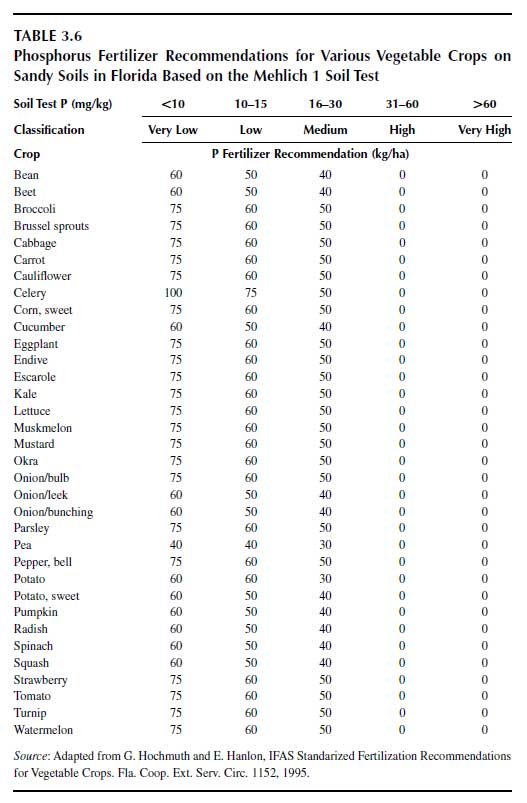Crop Response to Phosphorus
As noted in the previous section, the amounts of phosphorus applied to crops should be based ideally on a well-calibrated soil test. However, even at a given soil-test phosphorus level, the amount of phosphorus fertilizer required for economic-optimum yield often will vary with crop. Generally, fast-growing, short-season vegetable crops have higher phosphorus requirements than field and orchard crops. Many deciduous fruit crops infrequently respond to phosphorus fertilization even if soil tests are low (47). It is presumed often that surface soil tests fail to characterize the full soil volume where trees take up nutrients or the fact that trees take up nutrients over a considerable time period.There is considerable variability in phosphorus response among species of vegetable crops (66–70). For example, lettuce generally shows larger responses to phosphorus than most other vegetable crops including cucurbit and brassica species. Furthermore, genetic variation in response to phosphorus within species also exists. For example, Buso and Bliss (71), in sand culture experiments found that some butterhead types of lettuce (Lactuca sativa L.) were less efficient than other types under phosphorus-deficient regimes. However, the magnitude of this variation is usually small compared to the uncertainties and natural variation in soil-test-based phosphorus fertilizer recommendations. Generally, field experiments show that lettuce has a similar response to phosphorus regardless of cultivar or morphological type (72,73). As shown by the data presented in Figure 3.7, a similar soil-test phosphorus index level of 22 mg dm3 was required for maximum yield regardless of lettuce type (73).
Mechanisms of phosphorus-utilization efficiency have been classified into three broad classes including:
(a) secretion or exudation of chemical compounds into the rhizosphere,
(b) variation in the geometry or architecture of the root system, and
(c) association with microorganisms (74).
Future opportunities for improving phosphorus-utilization efficiency in crops through genetic manipulation of traits exist (75).
In conclusion, as available data permit, soil-test recommendations for phosphorus should be customized by crop. However, at present, soil-test-based recommendations are generally not sufficiently sensitive to allow recommendations to accommodate the more subtle genetic variation among cultivars within crop species.
 |




